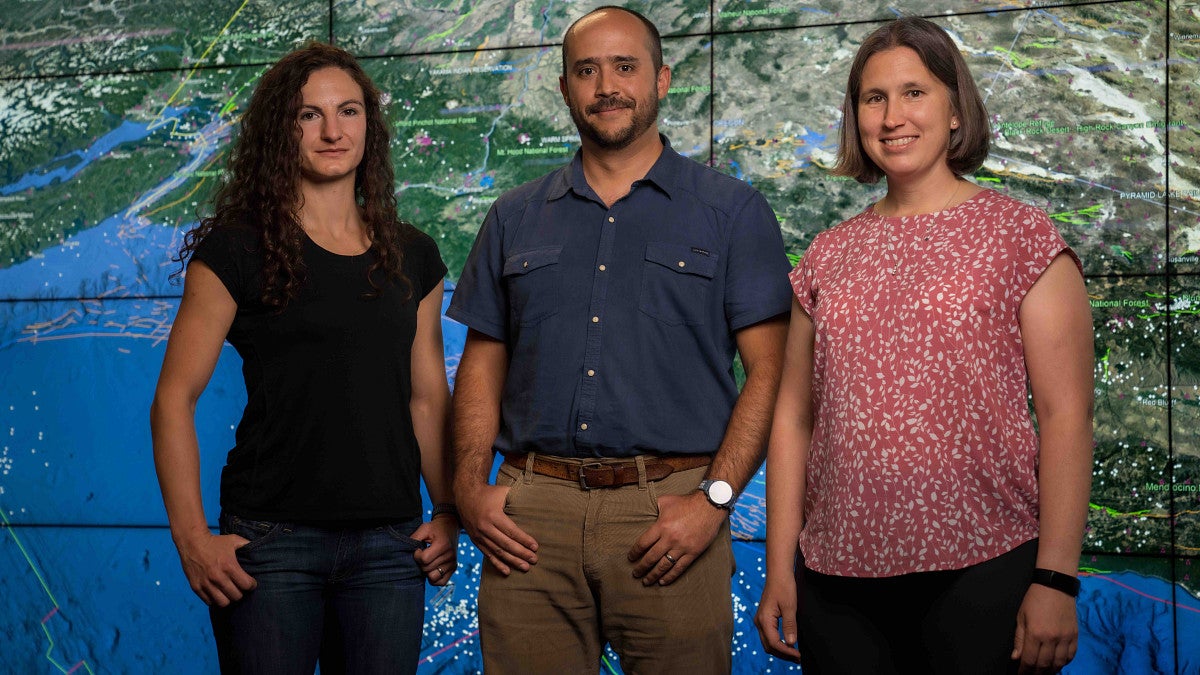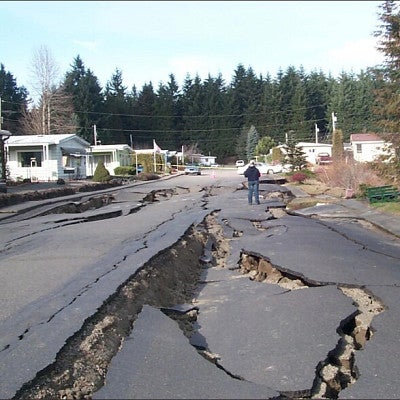
With the looming threat of the “The Big One,” a potential 9.0 magnitude earthquake off the coast of the Pacific Northwest, the University of Oregon will lead a new innovative multi-institution earthquake research center, which will receive $15 million from the National Science Foundation over five years.
The Cascadia Region Earthquake Science Center (CRESCENT) is the first of its kind to focus on subduction zone earthquakes, where one tectonic plate slides beneath another. The center will also work to diversity in the geosciences and support earthquake preparedness in the Pacific Northwest and beyond.
“The main goal of the center is to bring together the large group of geoscientists working in Cascadia to march together to the beat of a singular drum,” said Diego Melgar, associate professor of earth sciences in the College of Arts and Sciences and the director of the new center. “The center organizes us, focuses collaboration, and identifies key priorities, rather than these institutions competing.”
Among the team at CRESCENT are Valerie Sahakian and Amanda Thomas, both lead investigators along with Melgar and earth scientists in CAS. The center will also work with researchers at 16 institutions throughout the US, including University of Washington, Oregon State University and Stanford University.
“We are elated to see the nation’s first subduction zone earthquake hazards center become a reality, and we applaud the leadership of the interdisciplinary UO team who worked so hard to make it happen,” said Chris Poulsen, Tykeson Dean of Arts and Sciences and an earth sciences professor. “The assembly of this diverse community of researchers and stakeholders to establish a collaborative earth science research team focused on the Cascadia region is impressive, important and overdue. We are also proud that this award will help build a diverse future geoscience workforce.”
The center will also work to increase diversity in geosciences and train the next generation of geoscientists in the latest technologies. According to a 2018 article in the research journal Nature, the geosciences were the least diverse of all STEM fields.
CRESCENT aims to change that. For example, the center will engage with minority-serving and tribal high schools to raise interest in and create pathways to geoscience careers, as well as provide fieldwork stipends and year-round paid research assistantships to support undergraduate students.
The UO main campus is located near the Cascadia subduction zone, an active tectonic plate that has a long history of earthquakes of large magnitude. The last earthquake that happened on the fault was in 1700, which was an estimated 9.0 magnitude.

Today, the region is ill-prepared for such an earthquake and would devastate the area’s infrastructure and response from outside of the region.
“Moving here from southern California, I saw that Cascadia is comparatively less advanced in understanding regional questions about earthquakes in part because we didn’t understand the subduction zone could produce great earthquakes until a few decades ago,” Sahakian said.
CRESCENT’s work could help mitigate the damage from a high-magnitude earthquake. Scientists at the center will use latest technology—including high-performance computing and artificial intelligence—to understand the complex dynamics of a major subduction zone earthquake.
Researchers will also gather data and develop tools to better forecast specific local and regional impacts from a quake. That knowledge could help communities better prepare by improving infrastructure and developing more informed emergency plans.
“The center enables us to make bigger strides in models, products, and lines of research to work with engineers and emergency planners to create better building codes and actionable societal outcomes,” Sahakian said. “The whole is greater than the sum of its parts.”
And the center will collaborate with communities that could be impacted by earthquake hazards, which will help guide research priorities.
“The center will conduct research that is directly relevant to earthquake and tsunami hazards but too ambitious for any one scientist to take on individually,” said Thomas, the chief technical officer for CRESCENT. “Our goal is to create community-endorsed research products that are immediately relevant for science and hazard estimates.”
